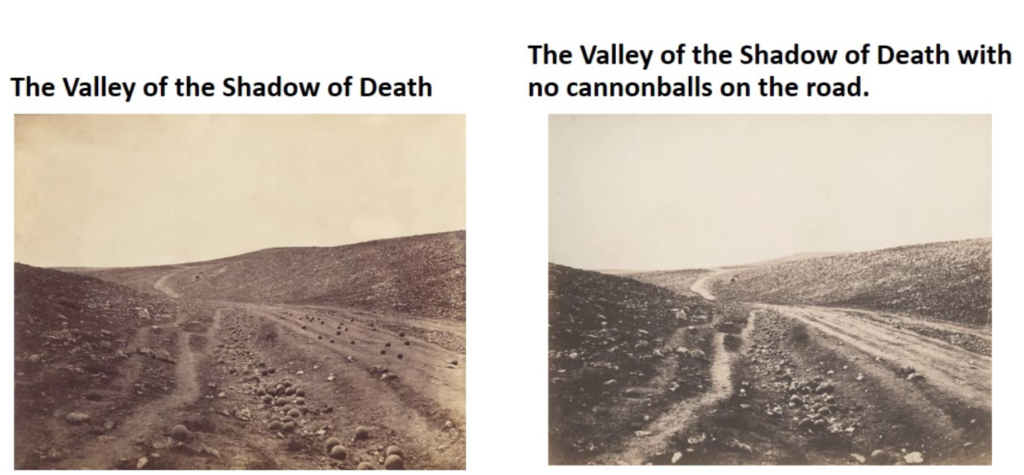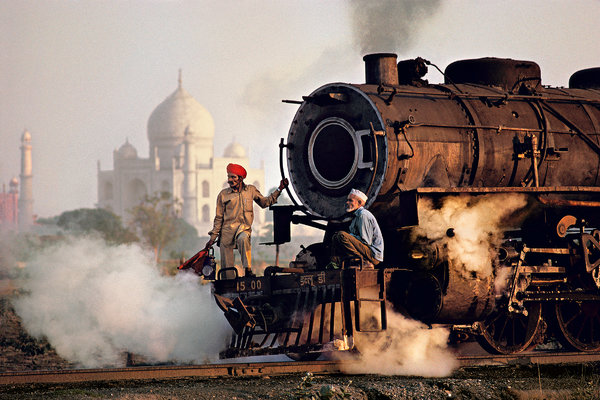Photography was created in 1822 when the first photograph was taken by Joseph Nicéphore Niépce (pronounced “nyeps”). Photography was and still is seen as an art form as it is seen as drawing with light. Photography can be seen as an illusion as from the early days of photography in a dark room photographs have been manipulated to make them appealing or interesting, there has always been an idea that photography is theatrical as there has always been the element of people striking poses at the camera and the photographer zooming in and focusing on one thing and eliminating the other elements out of the photograph where for nearly all photographs have been manipulated, now a days we have technology which enables us to edit and manipulate our photographs even move editing things out, editing things in changes the photo and the dynamics completely which can make people question if there is an actual photograph which is true and doesn’t hide anything. Technology has developed so much in recent years there are generated images now which means people don’t even need to go out and take their own photos they are able to use apps and websites which have a code to create your images the benefits of artificial intelligence is that it can be a new form of creating art and photographs but on the other hand there can be some things of it which poses as a threat like the unrealistic ways it can pose ideologies around society and tings in general due to people seeing unrealistic things so often they won’t be able to tell what is ‘normal’ and what is real. Geoffrey Hinton resigned from his job at google as he was threatened by the power of ai as it could and does more harm than good. Photography can be seen as an illusion as all photos have been thought of each photographer has focuses on a main focal point for a reason on how they have envisioned the outcome of the image on the process of taking it and with modern technology things are edited in diverse ways to make it more appealing to the audience.
Before the digital age of photography images were edited by manipulation which many people describe this is when photography lost its innocence, before the digital age images were edited by using dark room techniques which consisted of methods and techniques that involve manipulation directly to the print, such as retouching with ink, paint, airbrushing, or scratching Polaroids during developing (Polaroid art). Negatives can be manipulated while still in the camera using double-exposure techniques, or in the darkroom by piecing photos or negatives together. Some darkroom manipulations involved techniques such as bleaching to artfully lighten or totally wash out parts of the photograph, hand colouring for aesthetic purposes, or mimicking a fine art painting.
The valley of the shadow of death is a photograph which is known for being manipulated in the early days of photography, it was considered the first “fake” photograph as the image content had been manipulated with the aim of conveying a different reality as to that which took place there photograph was taken by British photographer Roger Fenton in 1855 it was seen as the oldest photographs of warfare if it wasn’t manipulated. The photograph shows a desolate scene littered with cannonballs, some populating a ditch and some scattered along a stretch of road. The fact that this image was manipulated annoyed many people as it made people question the authenticity of photography and historical photos as they no longer trusted them as they did not know if they were real or not. In my opinion I believe that the image is really clearly done and it gives the audience a sense of what warfare was like but on the other hand I think it is wrong of the photographer to not have told anyone that it was a manipulated image and it was how he thought it would look like as he provided misleading information which has left people questioning not only photography and the truths about what a photo is but also history and if historians got this wrong and believed that it wasn’t a manipulated photo what does it say about other historical photographs.

Since the digital age it has become easier to manipulate photos as technology has evolved so much that it is easy to edit photos quickly and make it look professional. It is easy to edit the truth as the editing process is so easy and so good that it makes it look real so people don’t know the truth and are constantly being shown fake things, photo manipulation changes the truth as you are able to make things smaller, larger, change the shape the list of things go on and on. Ai, has evolved in the fact that you now no longer have to take end edit photos to remove background to place them on a new image, the ai does it all for you and finds images by you just adding prompts to it, Dream Studio creates images for you give the website prompts on what you want in the image and then it creates it giving you multiple different options of the images.


In my opinion a photograph can lie, and photographs have been lying for years from being edited in a dark room from now being able to edit them with a click of a button. These two photographs are great examples of photographs lying from looking at them without knowing the back story a person would believe that it is a fact of perfect timing and being in the right place at the right time is what captured these two amazing photos however it wasn’t the photo of the train was actually staged the photographer made the train reverse and stop multiple times to get the positioning of the building and the train perfect which in my opinion make the photo lie to the audience as to many people photography is about capturing the moment and the fact this photo may seem like it is capturing the moment is in fact now as it was staged. The second photo is in fact also staged the photographer created the whole photo he placed the cardboard photos and the shoes perfectly in place to create this shot of a ”homeless” person when in fact it wasn’t a homeless person everything was stages to audiences not knowing if a photo was staged or not this has a massive effect on history and historic photographs as how are we meant to know if these photos were staged or not when we can no longer find out from the person who created them. In my opinion I believe that ai is having a big effect on photography and the industry in many ways it is negatively impacting in in the sense it does not tell the truth gives people wrong impressions and does more harm than good however when ai is used as an art medium to create an interpretation of something with it being obvious are isn’t used in a harmful way I think it is a genius way to create art. In conclusion I believe that the future of photography could be in danger due to how fast technology is developing and changing and I believe that this will affect is as people may never know the truth about a photograph and what is it if it is all a lie.
1254 words









